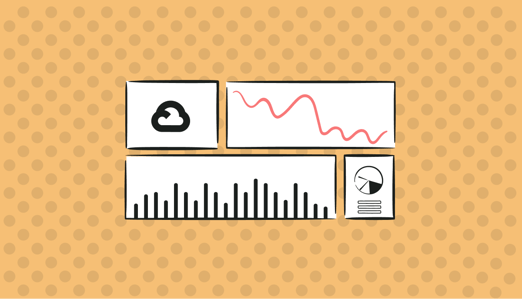
Managing your cloud spend is a critical aspect of innovation and scalability. To manage your investment in Google Cloud and prevent overspending, you must leverage FinOps tools and techniques that are easily understood by all parties involved – IT, development, compliance, and beyond.
Let’s discuss four ways that Google Cloud allows users to gain visibility and control over their cloud spending: the free tier, the pricing calculator, native cost management tools, and billing within the Cloud Console.
GCP Pricing vs. AWS and Azure
The top cloud service providers compete closely with one another on pricing. Like AWS and Azure, Google Cloud takes the pay-as-you-go approach and customers only pay for what they use. Pricing will vary by product and by usage, but there are no advanced fees or charges for termination. Google Cloud also supports per-minute and per-second billing for various services, similar to AWS and Azure. For pricing of specific Google Cloud products, take a look at the in-depth price list and compare it to AWS and Azure estimates.
If you have a predictable workload, you can optimize Google Cloud cost by prepaying for resources. By doing so, you get access to committed use discounts - up to 57% for resources like machine types or GPUs and up to 70% for memory-optimized machine types.
No matter the cloud service provider that you use, it’s critical to utilize both automated cost management tools and FinOps specialists to optimize cloud spending. As a Google Cloud user, understanding how each type of cloud service is billed will enable your team to take control of cloud costs.
4 Ways to Gain Visibility and Control Over Cloud Spending
What specific tools does Google Cloud provide for predictable cloud costs? Similar to AWS and Azure, there are native cost management products that users can leverage. These products and techniques can be overwhelming, so let’s dive in.
Free Tier - All Google Cloud users have access to a free tier, which provides access to 20 of the most popular products, up to a certain usage limit. In addition, new customers receive $300 in credits so that they can continue to explore Google Cloud products in a hands-on way. The free tier is where your team can discover which products make sense for your unique cloud needs and budget restrictions.
Google Cloud Pricing Calculator - Google Cloud provides an in-depth pricing calculator to help estimate your cloud spend and optimize your GCP bill. The fees are solely an estimate, not a binding contract, but it’s a great starting point in your Google Cloud relationship. Many cloud customers utilize this pricing calculator in comparison with the results from AWS and Azure’s pricing calculators.
Cost Management Tools - The most common way to control cloud spending in GCP is with the nine native features dedicated to cost management. When you understand how to leverage these features, you gain budget and permissions awareness that is fundamental to cloud cost management.
- Reports and dashboards can be tailored to cost management and optimization, giving you more clarity into cloud spending trends. Having easy-to-find, custom cost reporting is critical for tracking cloud costs.
- Resource hierarchy allows for cost allocation using organizations, folders, projects, and labels. You will know exactly where to prioritize spending. With this method, you can also set spending permissions with organizational policies.
- Billing access control enforces your organizational policies surrounding spending, administrative privileges, and cost-viewing permissions. These restrictions ensure that no dollars are incorrectly spent on cloud products or services.
- Budgets and alerts inform your team on when the budget has been exceeded or unexpect spending has occurred. Knowledge is critical to maintaining cloud spend.
- Automated budget actions prevent surprise costs that push the budget to its limit and maintain the expected workloads.
- Billing export allows for detailed cost analysis in whichever tool you choose - typically BigQuery.
- Intelligent recommendations from GCP can be quickly applied for cost savings and increased efficiency.
- Billing APIs support the management of your billing accounts.
- Quotas allow you to set spending limits and cost controls. This is a foundational element of cost management in GCP.
Billing in Cloud Console - Cloud Billing reports and Cloud Table reports are available in the Cloud Console to provide a more granular view of usage costs and trends from a global and project-level perspective. The more details you can get from GCP, the better.
By leveraging these four cost management options, you give your organization a better chance of optimizing its cloud spend in Google Cloud. To leverage cloud costs even more efficiently, consider FinOps. FinOps provides a fresh and detailed perspective on your cloud spend, and the toolkits that support FinOps are mature and intuitive.
Have you tried Finout yet? Finout is an emerging self-service cloud cost observability platform that treats cloud cost as a metric for simple management. Contact Finout today to learn how the platform can help control your Google Cloud spending while ensuring your services operate as efficiently as before.








